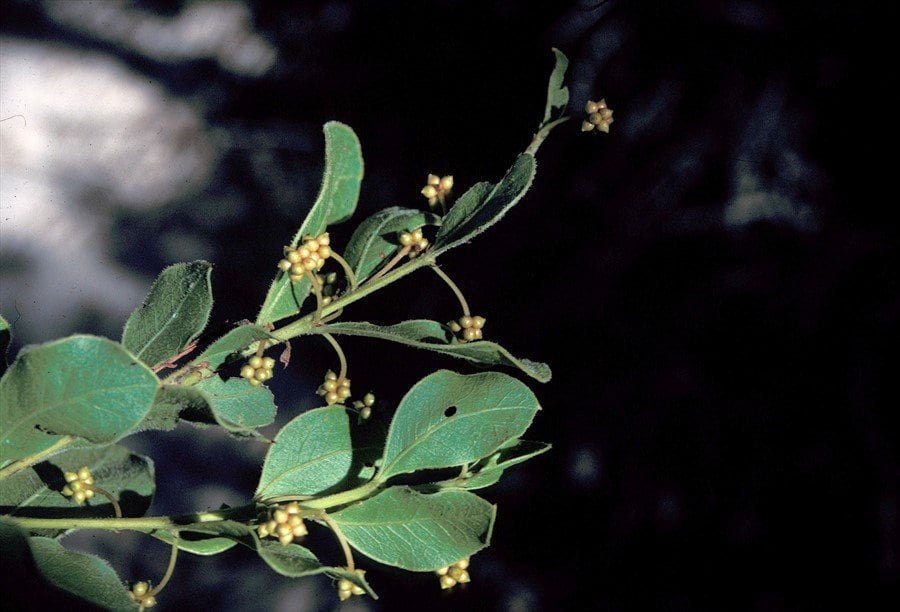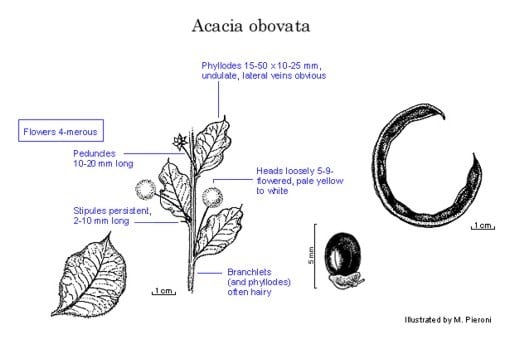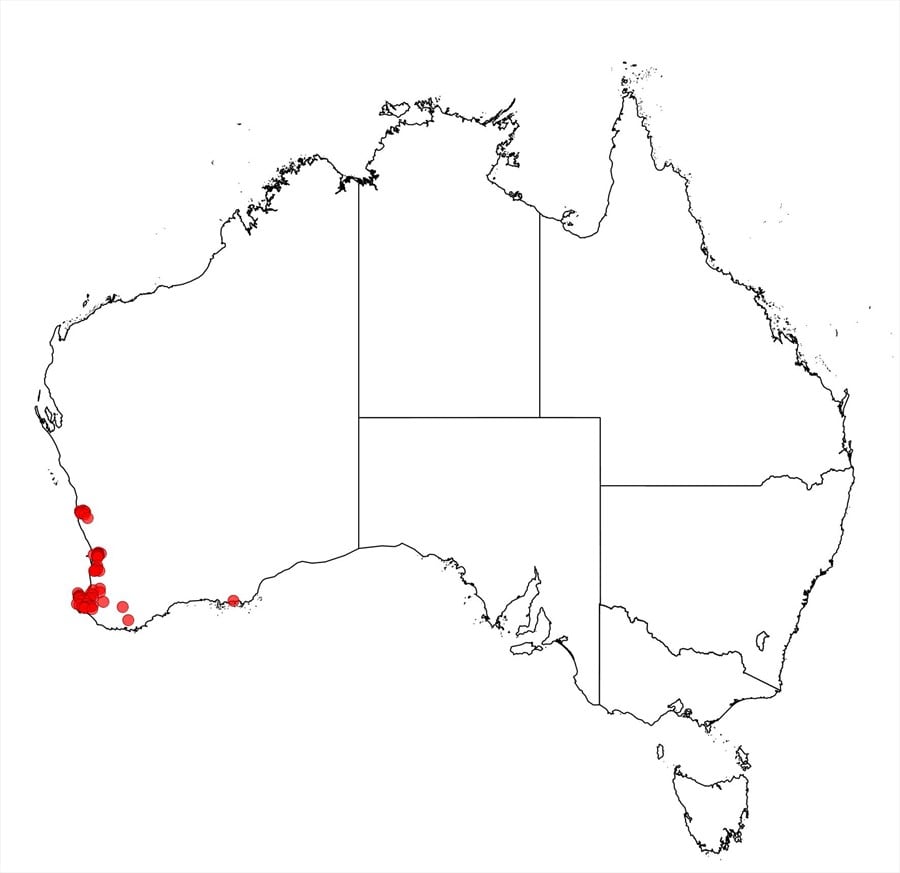Acacia obovata Benth.
WATTLE
Acacias of Australia
Family
Fabaceae
Distribution
Scattered in south-western W.A. occurring E of Jurien Bay in the Gairdner Ra., in the Darling Ra. E of Perth S to near Collie, in the Whicher Ra. W to Yallingup and S to near Augusta.
Description
Shrub 0.3–0.6 (–1) m high, multistemmed from a woody rootstock; stems slender. Branchlets puberulous to hirsutellous, with hairs commonly tubercule-based, sometimes glabrous. Stipules narrowly triangular, 1.5–4 mm long. Phyllodes elliptic to broadly elliptic or obovate, 1.5–5 cm long, 1–2.5 cm wide, undulate, obtuse-mucronate to acute, sometimes ±pungent, green, with indumentum as on branchlets; midrib and marginal nerves prominent; lateral nerves obvious, openly anastomosing; gland 3–11 mm above base, slightly raised. Inflorescences normally 1-headed rudimentary racemes with axes > 1 mm long; peduncles 1–2 cm long, ±glabrous; heads globular, loosely 5–9-flowered, pale yellow to white, often drying orange; buds acute to apiculate. Flowers 4-merous; sepals 3/4-united. Pods linear, spirally twisted at least when young, to 11 cm long, 5–6 mm wide, coriaceous-crustaceous to subwoody, glabrous; margins thick. Seeds presumably longitudinal, oblong-elliptic, 4 mm long, glossy, dark brown; aril terminal.
Habitat
Grows in laterite soil, normally in Jarrah (Eucalyptus marginata)–Marri (Corymbia calophylla) forest; around Mt Peron it occurs in low open heath.
Specimens
W.A.: 20 km E of Alexander Bridge on Brockman Hwy, B.R.Maslin 1684a (AD, NSW, PERTH); Mt Peron, near Cockleshell Gully, B.R.Maslin 3727 (CANB, K, MEL, PERTH, TLF); Darling Ra., E.Pritzel 296 (BM, K, M, MO, NSW, P, Z).
Notes
A member of the ‘A. myrtifolia group’ seemingly related to A. pygmaea which has glabrous branchlets and phyllodes, shallowly triangular stipules c. 0.5 mm long, phyllodes with few and obscure lateral nerves, 3- or 4-flowered heads, and narrowly oblong pods to 3 cm long and 3–4 mm wide (see B.R.Maslin, Nuytsia 10: 101 (1995), for further details). Other dwarf members of this group include A. nervosa and A. pygmaea.
Specimens with the largest phyllodes and tallest habit occur in the Jurien Bay district.
FOA Reference
Data derived from Flora of Australia Volumes 11A (2001), 11B (2001) and 12 (1998), products of ABRS, ©Commonwealth of Australia
Author
B.R.Maslin
This identification key and fact sheets are available as a mobile application:
URL: https://apps.lucidcentral.org/wattle/
© Copyright 2018. All rights reserved.









